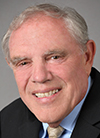
Rick Triola of NotaryCam: It’s Time for a New Definition of Equity
Residential and commercial real estate expert Rick Triola is Division President of NotaryCam, Newport Beach, Calif., a Stewart company, the pioneering RON platform of remote online notarization and identity verification and authentication. He is a two-time recipient of the MBA NewsLink Tech All-Star award. Reach him at rick.triola@notarycam.com.

It’s not often that society as a whole collectively agrees to assign a word to describe an entire year, but that’s exactly what we did in 2020 with the word “unprecedented.” However, the mortgage industry more aptly seemed to agree to assign the word “historic” to 2021, specifically when referencing the mortgage industry and its production and growth during the year. So, what word will define 2022 in the mortgage industry?
Equity.
Of course, lenders most often think of this word in terms of a home’s current market value minus any liens, but in 2022, lenders will need to add a new definition for this term to their lexicon.
As early as Q3 2021, the industry was put on notice that fair lending would be a top regulatory enforcement priority in an effort to help address the racial homeownership gap and ensure all borrowers had equal access to affordable mortgage credit. For example, in September 2021, the Biden-Harris Administration announced “a number of steps that will create, preserve and sell to homeowners and non-profits nearly 100,000 additional affordable homes for homeowners and renters over the next three years.”
Obviously, the mortgage industry is unable to contribute to the creation of new affordable homes, but in response to these types of federal-level directives, the mortgage industry has begun actively seeking ways to offer more affordable lending and down payment assistance programs.
However, affordable lending programs represent just one facet of a larger strategy that lenders will need to employ to improve access to homeownership for groups that have previously been excluded or overlooked, including low- to moderate-income borrowers and borrowers of color. While the rate and terms of the loan product play a significant role in a borrower’s ability to access the credit being extended, there are other parts of the home financing process, particularly from an operational perspective, where lenders can run into issues of equity and access.
Take the closing ceremony, for example. Today, this process still largely happens in person during normal business hours. However, a brief glance at the 25 lowest paying jobs in America that many of these careers often require working non-traditional hours and may not provide generous or flexible personal time off.
Thus, when working with an LMI borrower, there is a greater than average chance that they will face increased challenges to attend an in-person closing ceremony. An hour-long closing ceremony could result in the borrower missing an entire eight-hour shift, or the borrower may not be able to schedule time off work at all for the closing ceremony. Additionally, it’s not uncommon for a closing ceremony to be delayed or rescheduled, and the borrower may not have the flexibility to also change their schedule on short notice. Furthermore, an in-person closing requires access to transportation. Some LMI borrowers may be choosing owning a home over a vehicle, thus relying on alternate means like public transit or ridesharing and ultimately impacting the borrower’s ability to travel to an on-site location for the closing.
While convenience has often been the borrower-centric selling point for digital mortgage adoption, there is a case to be made for the ability of eMortgage capabilities like remote online notarization to address more of the issues that can hinder a borrower’s ability to take advantage of affordable lending options. Lenders that have implemented RON into their eMortgage processes will be better equipped to serve these borrowers because the closing ceremony can take place at any time and from anywhere.
Additionally, with the ability for the borrower to preview documents, the closing ceremony can be reduced to roughly 15 minutes, which could easily be completed on an employee’s break. Now, the same borrower as above can participate in a mortgage closing ceremony at home before leaving for work, while on a break from work or at home after work. RON allows lenders to meet their borrowers where they live or work.
In 2022, an expanded affordable lending program without RON would be like selling someone a house but not actually giving them the keys – it’s a great effort, but it doesn’t go all the way to providing full access. By adding to the industry’s standard definition of equity, lenders can re-examine their entire process to deliver convenience, cost efficiency and improved access to borrowers of all backgrounds and income levels.
(Views expressed in this article do not necessarily reflect policy of the Mortgage Bankers Association, nor do they connote an MBA endorsement of a specific company, product or service. MBA NewsLink welcomes your submissions. Inquiries can be sent to Mike Sorohan, editor, at msorohan@mba.org; or Michael Tucker, editorial manager, at mtucker@mba.org.)
